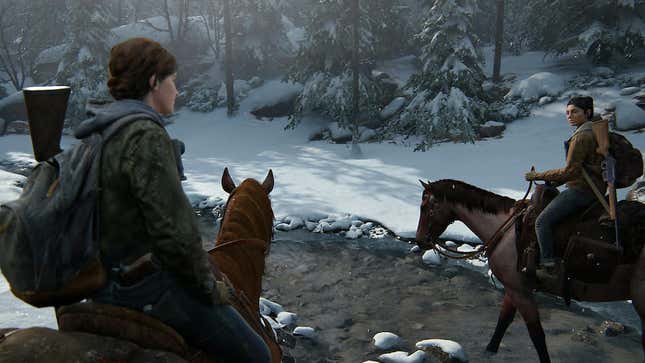
The Last of Us Part 2 is a big, big game that excels at the little things: the way Joel raises his hand to block sunlight from his eyes, or the way Ellie marks up a map of downtown Seattle with a Sharpie.
Another killer small touch is the haptic feedback—the rumble you feel in your controller—particularly when you’re riding on horseback. Plenty of games mimic the look of horseback-riding well enough, but which could truly be said to capture the feel of it? If you’re wondering how Naughty Dog did it, you’re not alone.
“Who did these haptics?” Katie Chironis, a senior game designer at Riot Games, wrote on Twitter this week. “I’ve done a lot of haptics in VR and it is really quite tough to (for example) make riding a horse feel like riding a horse. This is amazing.”
The person behind the haptics, apparently, is Kurt Margenau, co-game director of Part 2, game director of Uncharted: The Lost Legacy, and co-game director for Uncharted 4. Replying to Chironis’ tweet, he clarified what went into designing the horseback-riding haptics, a process he described as “super simple.”
Margenau likened it to the Jeep from Uncharted 4. Midway through that game, Nate, Sully, and Sam rent a four-by-four, complete with winch, to explore the Madagascar countryside in search of pirate treasure. The first step, Margenau wrote, called for measuring all of the g-forces in all axes at the impact point, whether that’s the driver’s or the rider’s “butt.” From there, it was a matter of mapping “the overall magnitude of that to a range of rumble intensity every frame.” The final step required tuning the minimum and maximum G’s and rumble forces.
In a vehicle, Margenau said, bumps and turns in the road dictate the level of rumble. On horseback, however, that stuff is all dictated by the animation. But taking the reins of a steed poses a different issue than stepping behind the wheel of a Jeep: How do you handle the gallop? For that, he wrote, it was imperative to create an on-screen graph visualizing the values for every frame “to find a good range that kicks in when you’re galloping.”
You know—super simple!